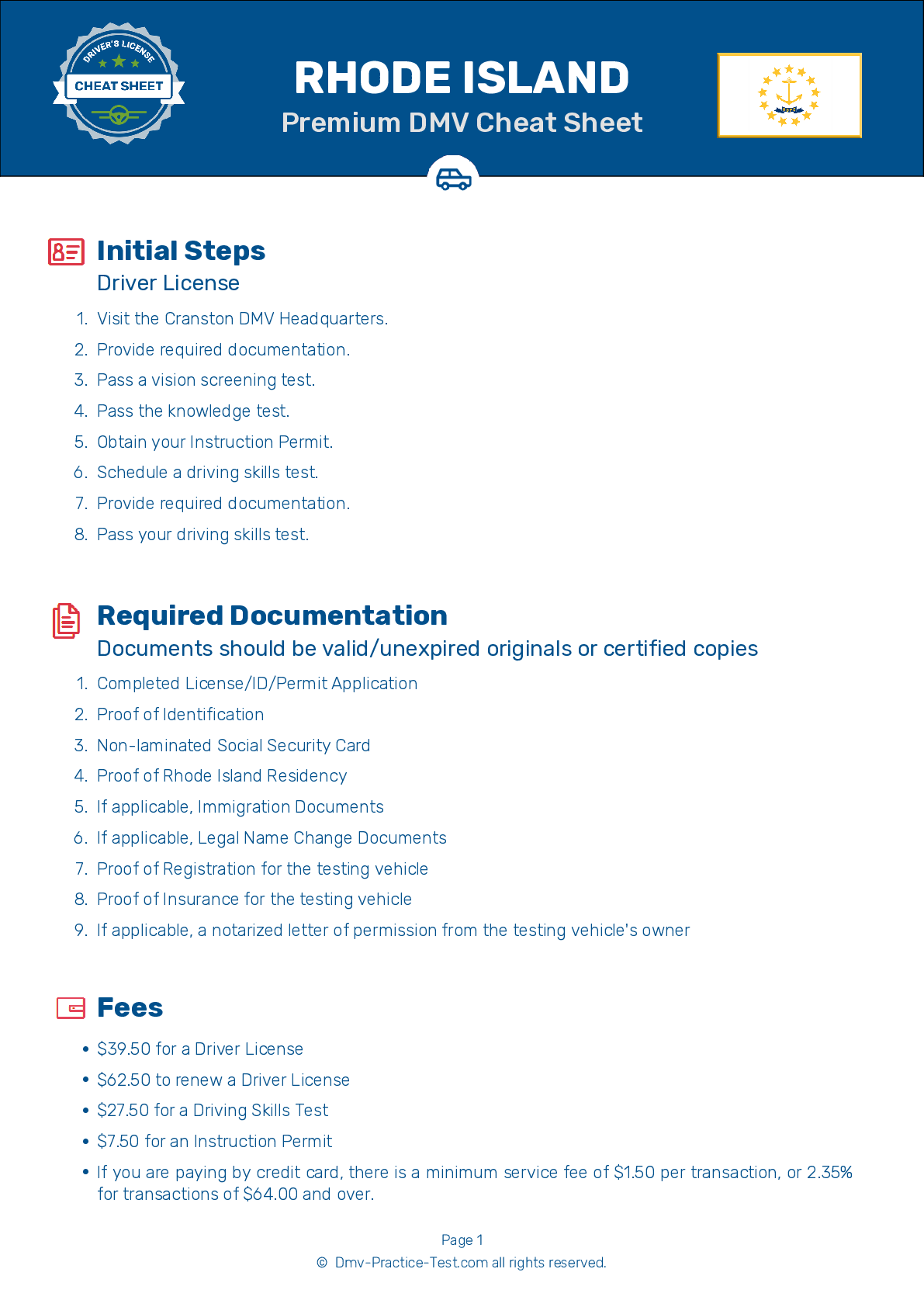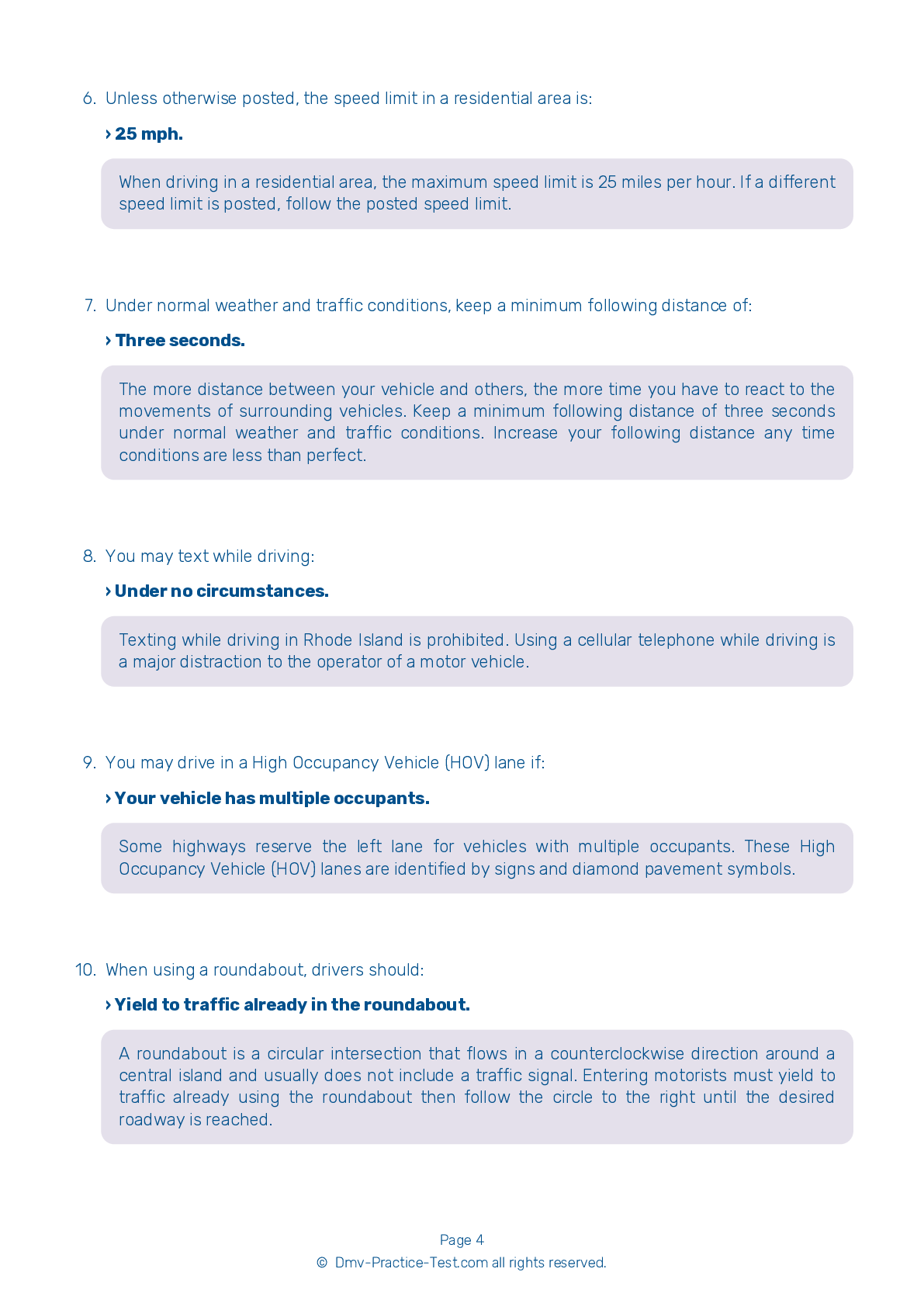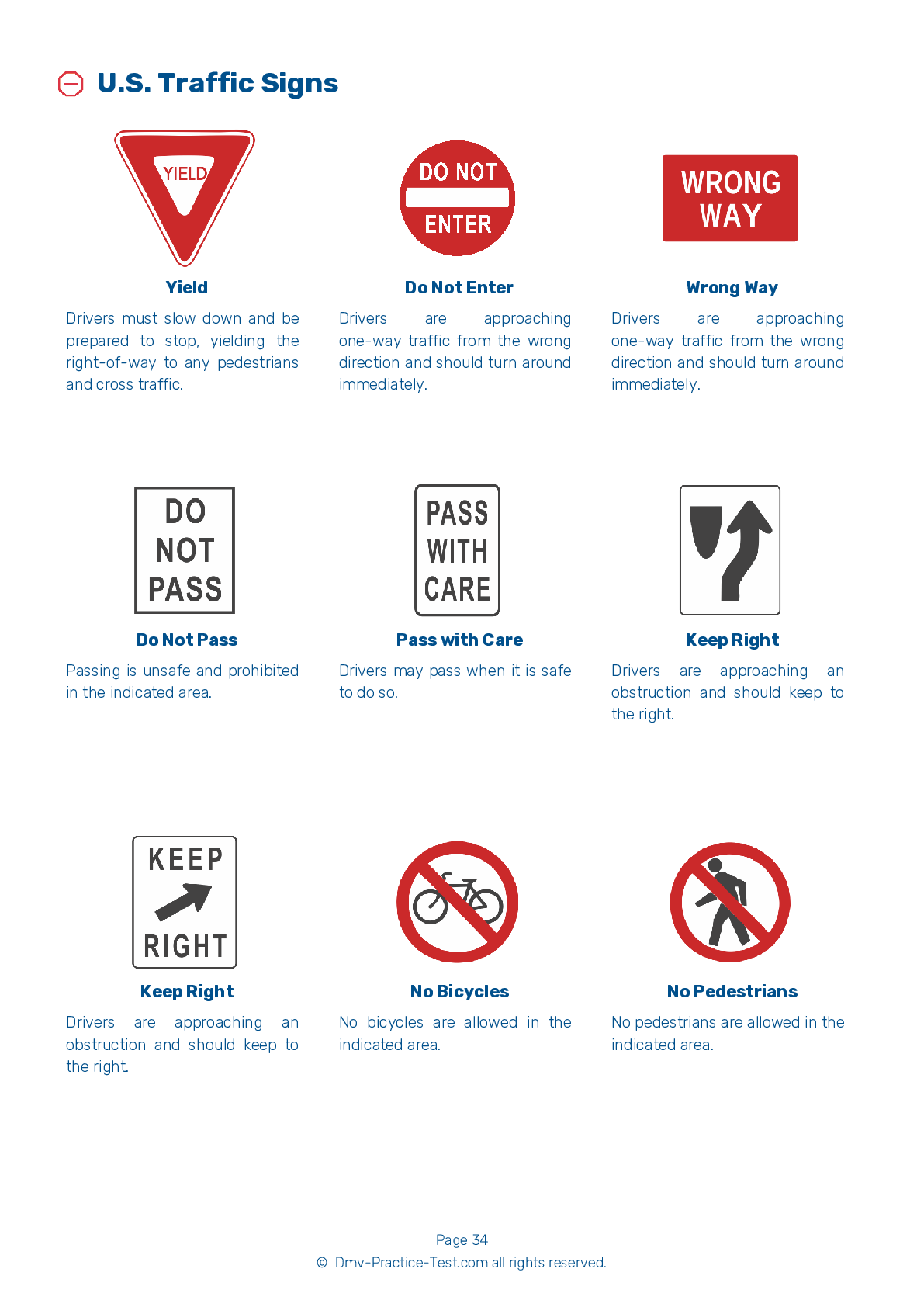FREE Rhode Island DMV Practice Test #23 Page 2 of 4
The DMV practise exams in Rhode Island have been updated for January 2025. It comprises questions based on the most important traffic signals and laws for 2025 from the Rhode Island Driver Handbook. To study for the DMV driving permit test and driver's licence exam, use actual questions that are very similar (often identical!) to the DMV driving permit test and driver's licence exam.
Each question on the practise exam has a tip and explanation to help you recall the ideas. Questions about traffic rules, traffic signs, and driving statutes, as well as knowledge from the Driver Handbook, will be included in the written portion of the official Rhode Island DMV test.
You must properly answer 21 of the 30 questions to receive a passing mark. Use the Rhode Island Department of Motor Vehicles' practise exam to help you prepare for your instruction permit or driver's licence.
The DMV exam is offered in a variety of languages.
Using any form of testing help will result in an automatic fail, and the DMV may take further action against your driver's licence, so avoid it.
9 . A flashing red light on a traffic signal means:
A flashing red light means the same thing as a stop sign. If you encounter a flashing red light, you should come to a complete stop, yield to appropriate traffic and pedestrians, and only proceed when it is safe to do so.
10 . You should use your horn when:
Only use your horn when it is necessary to avoid collisions. Do not use your horn if a driver or bicyclist is moving slowly and you want him or her to drive faster or get out of your way.
11 . Which lane must you be in before making a left turn from a one-way street?
When making any turn, turn from the lane closest to the direction you wish to travel into the first available legal lane. If you are making a left turn from a one-way street, this means that you would make the turn from the lane nearest to the left curb.
12 . Which of the following influence(s) the effects of alcohol?
Your blood alcohol content (BAC) depends on how much alcohol you drink, how much time passes between drinks, and your weight. Eating before or while you drink helps slow the absorption of alcohol somewhat, but it cannot prevent intoxication or impairment if you have too much to drink.
13 . This sign means:

Eight-sided traffic signs warn drivers that they must stop and yield the appropriate right-of-way at an intersection. Drivers may proceed when it is safe to do so.
14 . Hydroplaning occurs when tires ride on a thin film of water instead of on the road. To prevent hydroplaning in wet weather, you should:
Hydroplaning is caused by driving too fast on a wet road. Slow down when driving on wet pavement to prevent hydroplaning.
15 . When driving in fog, you should use your high beam headlights.
You should use your low beam headlights when driving in fog. High beams will reflect back at the driver and lower visibility.
16 . Which of these statements is true about large trucks?
Large trucks take longer to stop than other vehicles traveling at the same speed. The average passenger vehicle traveling at 55 mph can stop within 400 feet. However, a large truck traveling at the same speed can take almost 800 feet to stop.
Need Car Insurance? No problem!
Compare the best rates in Rhode Island and find a personalized policy that meets your needs.
1. Are You Currently insured ?
2. Married ?
3. Do you own your Home?
4. Do you have more than 1 car ?
5. Have you or a Family Member Honorably Served in U.S. Military ?
6. Your Name
7. Age
8. Zip code
IMPORTANT REMINDER:Auto Insurance is Mandatory to drive in Rhode Island. Get covered before you hit the road to avoid any fines.
Ranked by best match



